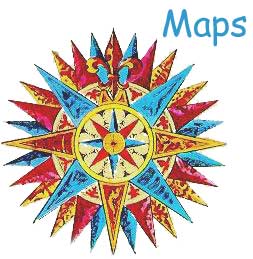

|

Before the great discoveries of the 16th-century occurred, cartography was in the early stages of development, and notions of the unknown northern terrain were fairly diffuse in nature.
The region was frequently termed "Terra Incognita".
During the 16th-century, and particuarly throughout the 17th-century, changes came about quickly.
When Olaus Magnus introduced his Carta Marina, in 1538, a map of the North appeared that few of our contemporaries would be able to recognize.
Abraham Ortelius, however, created a likeness that resembles a modern edition as early as 1570.
Another cartographer, Lucas Waghenaer, introduced the first atlas containing a sea chart, in 1584, and he supplemented this with a map of Finmarchia in a 1592 edition.
Maybe Willem Barentsz, hoping to find the Northeast Passage, used this map when he sailed around this coast in 1596? Barents presented his discoveries, including the location of Spitsbergen, in his famous 1599
polar chart.
Another of the participants on Barents's travels, Jan van Linschoten, produced important contributions, too, in the mapping of this unknown region in his book of 1601.
Numerous polar charts were produced throughout the 17th-century.
Gerard Mercator, perhaps the most famous of the early cartographers, had created his own polar chart in 1589, and added the newly found Spitsbergen in the 1606 edition.
Numerous charts of the northern regions appeared, though, during the 17th-century. Willem Janszoon Blaeu published one of the most beautiful charts ever made in 1635; this was as good as plagerized by Johannes Jansonius in c. 1650. |

|
© University Library of Tromsø - 1999.
The Northern Lights Route is part of The Council of Europe Cultural Routes. The Cultural Routes are an invitation to Europeans to wander the paths and explore the places where the unity and diversity of our European identity were forged.
|

|